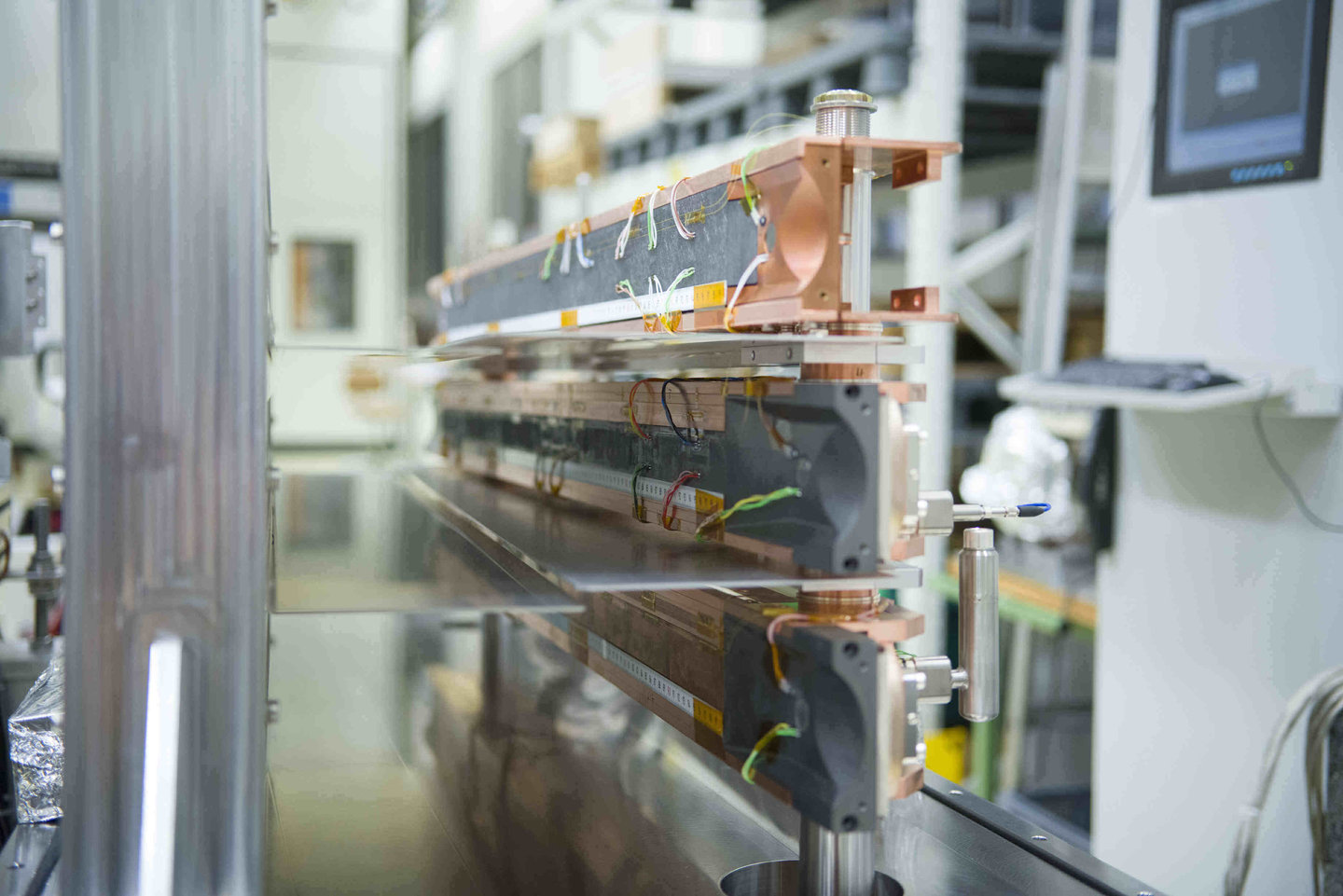This summer, the HiRadMat (High Radiation to Materials) facility began testing the first HL-LHC collimator jaw prototypes. How they perform when bombarded with high-energy, high-intensity beams will go on to shape the particle accelerators of the future.
The HiRadMat facility uses SPS beams to test materials and accelerator components in extreme conditions. As accelerators grow more powerful, they require materials that can withstand extreme conditions of temperature and pressure as well as high levels of radiation.
In 2012, in a HiRadMat experiment, six different materials were probed for possible use in collimators and absorbers. The results (see box) saw two standout performances from molybdenum-graphite and copper-diamond. These contenders have moved forward to the next round and three full collimator jaws (one typical LHC jaw and two made with the new materials for the future HL-LHC) are being put to the test in a dedicated experiment – led by CERN’s Mechanical and Materials Engineering (EN/MME) group, with support from several groups from the EN, BE, TE and PH departments. “These novel materials have undergone several years of development and optimisation,” says Alessandro Bertarelli, team leader of the “Jaws” experiment. “They are now ready for harsh tests in their final configuration, that of a full-scale collimator jaw for the HL-LHC.”
“We are doing detailed studies in different ‘accident’ situations, and seeing how the three jaws perform,” adds Michael Guinchard, who is in charge of the experiment’s complex instrumentation and data acquisition system. “We have recreated a beam injection error situation – that’s when bunches directly impact the jaw – and, so far, have found the results agree with our simulations. By the end of the year, we hope to validate which of the jaws will be mounted in a HL-LHC collimator prototype for final qualification.”
In addition to the electrical strain gauges, temperature gauges, laser doppler vibrometer and a high speed camera that adorned the 2012 experiment, the experiment team has added a whole new host of instrumentation for 2015. “Most notably, we are using optical fibres to study the jaw while it is being hit by beams,” says Guinchard. The optical fibres are bonded directly to the surface of the jaws and, when impacted by beam, they deform. This leads to subtle changes in their signal, providing a highly sensitive picture of the jaw’s deformation, ideally complementing information from the electrical strain-gauges.
The team has also installed new ultrasound devices to map the inside of the materials. These small probes are just 8 mm in diameter and can work in high-temperature (350°C), high-radiation (1000 kGy) environments. “Ultrasounds will help us look beyond superficial damage and straight into the heart of the material,” says Federico Carra, who is in charge of HL-LHC collimator mechanical design and engineering. “Now we can detect the propagation of cracks, internal melting and other non-visible defects.”
Molybdenum-graphite has also garnered attention from outside CERN. “In addition to being shock resistant, it is very light and extremely conductive, and so could be ideal for a broad range of applications,” says Carra. “For example, it could be used in high-end electronics, avionics or even advanced braking systems. We are working with CERN’s Knowledge Transfer group to explore further applications.”

